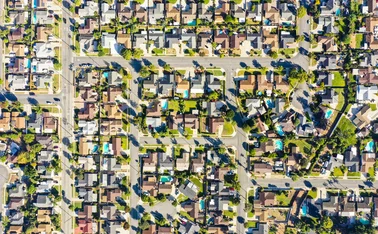
Chain reaction – The green supply chain and the Bay Area Development
Strict environmental protection policies and government-backed green supply-chain networks determine Guangdong Province’s foremost position as leader in a global economic green transformation process, according to Zhang Jianyu, director of the Chinese Programme, Environmental Defense Fund


The Guangdong–Hong Kong–Macao Greater Bay Area (the Bay Area Development) boasts the potential to become the centre of the world’s green supply chain, with green growth as its priority.
The green financial chain has penetrated every aspect of our lives. The closing down of a key supplier to Shanghai-based car parts supplier Schaeffler for a breach of environmental standards affected 49 suppliers and the production of 3 million vehicles at a cost of around RMB300 billion. Schaeffler is only one link in producing steel, but its failure impacted on the whole industry chain.
In addition to age-old factors affecting the buyer-seller relationship – low price, good quality and rapid goods delivery – environmental protection is now another important standard in supply-chain management. Upstream and downstream companies are all required to improve efficiency, and save energy, water, resources and electricity, as well as to protect the environment and adopt a low-carbon policy.
The green supply chain was first proposed by researchers at the University of Michigan, and the concept has gained in popularity in China since 2011. Introduced as a concept of global environmental protection, the green supply chain was included for the first time in the final resolution of the 2014 Asia-Pacific Economic Cooperation (APEC) summit by the Chinese government. Chinese officials initiated the construction of a green supply-chain network in the Asia-Pacific region to promote industry connectivity and green growth. The 2017 APEC summit in Vietnam praised China’s recent green supply-chain initiatives.

Dongguan’s experience in building a green supply chain
Green supply chains and networks have been operational in China since 2011, when pilot projects were launched in Beijing, Tianjin, Hebei and the Yangtze River Delta. Currently, the best area in the country for green supply chain is in the Bay Area Development, especially Dongguan, which is the first and only green supply-chain pilot municipality recognised by the Ministry of Ecology and Environment. In 2016, the Dongguan municipal government, together with the then-Ministry of Environmental Protection and the National Development and Reform Commission, co-ordinated data concerning polluting emissions, energy saving and low-carbon emissions to form the Dongguan Index, a standard by which to assess the manufacturing industry’s environmental standards. The index serves as a specific measure for energy-saving and efficiency-improving, in the form of star ratings. Based on this index, Dongguan set up a green supply chain and took the lead in the establishment of the Guangdong Green Supply Chain Association, using it as a campaign to promote and build upon Dongguan’s experience.
Reasons for Dongguan’s success
Dongguan is a latecomer in the field of green supply chain, but the reasons for its success and leadership can be summarised thus:
First, the determination of local government and the people has spurred the Bay Area Development to improve the environment and carry out a green transformation. For example, in 2015, Guangdong Province took the lead in attaining air-quality standards. In 2016, the province hosted the majority of the top 10 cities with the best air quality of more than 74 cities nationwide above a designated size.
The tertiary industry in Guangdong has already exceeded 50% of the total economy, with advanced manufacturing accounting for more than 48% of the total added value of the industry, the use of non-fossil fuels exceeding 20% and coal sinking below 42%. In fact, coal use has been decreasing in Guangdong since 2010, and the proportion of coal in the economy started to decline in 2012. The demand for a high-quality environment is the guiding principle and political foundation for Guangdong to be at the forefront of the country’s drive for green transformation.
Second, the export-oriented economy determines Guangdong’s leadership in the green supply chain. Guangdong is the world’s manufacturing centre and is reliant primarily on exports. Foreign buyers play a positive role in accelerating the green supply chain. For example, Chinese suppliers make up around 80% of US retail giant Walmart’s imports – around half of them are from Guangdong. In 2008, Walmart proposed the elimination of non-compliant suppliers from the supply chain within five years. In 2014, it suggested improving the energy efficiency of 70% of its suppliers. On April 19, 2017, Walmart set itself the goal of cutting CO2 emissions by 1 billion tons over the next five years through its supply chain. Guangdong’s export-dominated, long-globalised economy has determined the city’s leadership in advanced environmental management and green supply-chain management.
Third, Dongguan has striven for high standards in green exports. Dongguan has improved efficiency, reduced pollution, cut carbon emissions and adopted other policies for environmental protection. In addition to exporting green products, Dongguan drove the development of a green export standard. The city is now at the forefront of the progress of the green supply chain and, to retain this momentum, it must seek out new driving forces for the future. The focus might gradually shift to formulating export standards, building brands, ensuring high-quality production and enhancing living standards.
Fourth, non-governmental organisations (NGOs) are a crucial aspect of green development. Shenzhen and Guangdong have made major strides by establishing environmental NGOs. For example, the Guangdong Green Supply Chain Association and the industry/university/research platform provided by NGOs have further promoted green development of the Bay Area Development, and this momentum should be maintained.
Innovation is a key aspect of future development. China should not only become a base for global green development, but it should also be a breeding ground for green innovation and build a centre for the green supply chain in the Bay Area Development.
Only users who have a paid subscription or are part of a corporate subscription are able to print or copy content.
To access these options, along with all other subscription benefits, please contact info@centralbanking.com or view our subscription options here: http://subscriptions.centralbanking.com/subscribe
You are currently unable to print this content. Please contact info@centralbanking.com to find out more.
You are currently unable to copy this content. Please contact info@centralbanking.com to find out more.
Copyright Infopro Digital Limited. All rights reserved.
As outlined in our terms and conditions, https://www.infopro-digital.com/terms-and-conditions/subscriptions/ (point 2.4), printing is limited to a single copy.
If you would like to purchase additional rights please email info@centralbanking.com
Copyright Infopro Digital Limited. All rights reserved.
You may share this content using our article tools. As outlined in our terms and conditions, https://www.infopro-digital.com/terms-and-conditions/subscriptions/ (clause 2.4), an Authorised User may only make one copy of the materials for their own personal use. You must also comply with the restrictions in clause 2.5.
If you would like to purchase additional rights please email info@centralbanking.com







